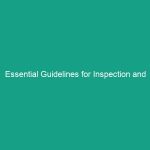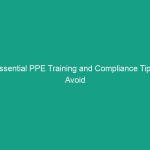Good Morning Team!
Today, we’re going to discuss an incredibly important topic: Essential Tips to Properly Secure Workpieces and Enhance Safety. This is not just about following protocols; it’s about ensuring that you go home safe at the end of the day. Properly securing workpieces is crucial to minimize risks and prevent accidents that can lead to injuries or worse.
Understanding the Importance of Securing Workpieces
Securing workpieces refers to the methods and practices used to hold materials in place during various operations, such as machining, welding, or assembly. This practice is vital for several reasons:
- Preventing accidents: Loose workpieces can lead to tool breakage, equipment malfunction, and injuries.
- Enhancing precision: Properly secured workpieces allow for better accuracy in operations.
- Improving efficiency: Minimizing movement during processes can lead to faster and more reliable outcomes.
Many employees may think that securing workpieces is just an additional task, but it is a critical component of Workplace Safety that directly impacts everyone’s health and productivity.
Key Hazards, Risks, and Safety Considerations
When workpieces are not secured properly, several Hazards can arise:
- Tool and Equipment Damage: Unsecured pieces can damage tools and machinery, leading to costly repairs.
- Injury Risks: The risk of injury increases significantly when equipment malfunctions due to loose workpieces.
- Quality Issues: Poorly secured pieces can lead to defects in the final product.
Ignoring these risks can result in serious consequences, including severe injuries or even fatalities. It’s crucial to recognize these hazards and take proactive measures to mitigate them.
Best Practices, Procedures, & Actionable Advice
To enhance safety and properly secure workpieces, follow these Best Practices:
1. Use Appropriate Fixtures
Always select the right fixtures for the job. Using incorrect fixtures can lead to instability. Ensure that:
- The fixture is rated for the load you are working with.
- It is compatible with the tools being used.
2. Inspect Your Equipment Regularly
Make it a habit to inspect clamps, vices, and other securing devices before use. Look for:
- Wear and tear or damage.
- Proper functionality; ensure everything is working as intended.
3. Secure Workpieces Properly
Follow these tips to secure workpieces effectively:
- Utilize multiple points of contact when securing to distribute load evenly.
- Use appropriate pressure; over-tightening can cause damage, while under-tightening can lead to movement.
- Follow manufacturer instructions for securing workpieces.
4. Training and Awareness
Ensure all employees are trained on the proper securing methods. Conduct regular safety briefings and include:
- Demonstrations of securing techniques.
- Discussions about potential hazards and how to avoid them.
5. Reporting and Feedback
Encourage employees to report any issues or near misses. Create an open Environment where:
- Employees feel comfortable sharing their experiences.
- Feedback is valued and acted upon.
Regulations, Standards, and Compliance
It’s essential to be aware of the Regulations that govern Workplace Safety, such as OSHA Standards. Here are some key points:
- All equipment must comply with safety standards to ensure the safety of all employees.
- Regular Training sessions must be conducted to keep everyone informed about current regulations.
Compliance is not just about avoiding penalties; it protects employees and fosters a culture of safety.
Employee Engagement & Discussion
Let’s open the floor for discussion. I’d like to hear from you:
- What safety challenges have you encountered related to securing workpieces?
- Can you share an experience where proper securing made a difference?
Your experiences can provide valuable insights for everyone, and together, we can enhance our safety practices.
Conclusion & Key Takeaways
In summary, properly securing workpieces is a critical aspect of Workplace Safety that cannot be overlooked. Remember the following key points:
- Use appropriate fixtures and inspect them regularly.
- Follow Best Practices for securing workpieces.
- Stay informed about regulations and compliance.
By prioritizing these practices, we can ensure a safer work environment for everyone. Thank you for your attention today, and let’s commit to making safety our top priority!


